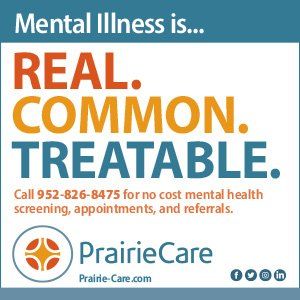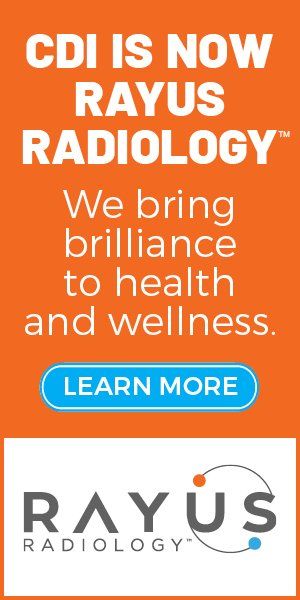trial Fibrillation (Afib) is a very common heart arrhythmia affecting approximately six million people in the U.S. and is one of the most important risk factors for stroke. To reduce the risk of stroke, many patients with Afib are treated for years with blood thinners, and while effective in reducing the risk of stroke, they do pose a significant risk of bleeding complications. Therefore, many patients who take anticoagulants live in constant fear of nosebleeds, internal bleeds, falls or injuries and even necessary medical procedures, such as a colonoscopy, which could result in bleeding. Unfortunately, many of these patients ultimately cannot or choose not to be treated with a blood thinner and run a marked increased risk of stroke. Thankfully, these patients now have an effective alternative to blood thinners— left atrial appendage occlusion (LAAO).
Cardiology
4D Holographic Surgery
Advances in treating Atrial Fibrillation
By JACOB DUTCHER, MD, FACC
Afib affects the contractility of the atria of the heart, which can lead to a blood clot forming within the left atrial appendage (LAA). If a blood clot forms and escapes from the LAA, it can travel to any part of the body, such as the brain, cutting off the blood supply and resulting in a stroke. In people with non-valvular Afib, more than 90% of stroke-causing clots form in the LAA. As such, closing off the LAA has been targeted as a potential alternative to blood thinners in reducing the risk of stroke.
We have seen a significant decline in our procedure times, often now done in 20 minutes or less.
There are now two FDA-approved devices for LAAO: WATCHMAN (Boston Scientific) and AMULET (Abbott). Both the WATCHMAN and AMULET require a one-time procedural implant, where the device can be placed within the LAA, permanently closing it off. In closing off the left atrial appendage, these devices remove the greatest source of clot formation and dramatically reduce the incidence of stroke in patients with Afib.
Shortly after LAAO, most patients can safely discontinue their blood thinner. Both devices have now been studied extensively in multiple clinical trials and the consensus opinion is that LAAO is just as effective as blood thinners in reducing the risk of stroke, but with the additional benefit of reducing bleeding complications. In addition, results of some studies suggest that there may be a mortality benefit of LAAO when compared to long-term anticoagulation. Because WATCHMAN was FDA-approved approximately six years before AMULET, most of CentraCare’s experience thus far has been with the WATCHMAN device.
Implanting the WATCHMAN
To implant the WATCHMAN, the cardiologist inserts a small sheath into the femoral vein in the groin and advances the sheath into the right atrium. From there, a transeptal puncture is performed to give access to the left atrium. Once in the left atrium, the WATCHMAN delivery catheter is advanced into the left atrial appendage where the WATCHMAN device is ultimately deployed and released. Up until just recently, the procedure was most commonly performed under general anesthesia and routinely took 45 minutes to one hour to complete. Patients typically stayed in the hospital overnight and would go home the subsequent day.
While the steps may sound relatively simple to perform, there are challenges that arise with a WATCHMAN implant. For example, to complete a WATCHMAN implant, cardiologists rely heavily on X-ray-based 2D-imaging to guide the implant of the cardiac device. Since soft tissues (such as the heart) do not show up well on X-ray, this type of imaging requires the use of contrast dye to identify and delineate cardiac anatomy during procedures. Unfortunately, contrast dye can cause allergic reactions and can also be toxic to the kidneys, especially in patients with pre-existing kidney disease. This scenario is present in nearly 15% of our patients, which may increase their risk or even preclude them from LAAO.
Ultrasound-based imaging, in either the form of Transesophageal Echocardiography (TEE) or Intracardiac Echocardiography (ICE), are also widely used. However, they are also predominantly 2D-based, with some recent expansion into 3D- and 4D-imaging. However, the imaging is not always ideal, and it does require additional personnel and expertise to understand the images and guide a LAAO procedure.
Due to these challenges in imaging, I have wondered if, with improved imaging, there could be a faster, safer and more precise way to perform LAAO.
An improved method to implant the WATCHMAN
For several years, I’ve been working with EchoPixel, an innovative Silicon Valley-based company that is aiming to revolutionize the future of the procedure room. EchoPixel has developed pre-operative True3D holographic planning and intra-operative Holographic Therapy Guidance (HTG) platforms. These new imaging platforms allow physicians to interact with patient-specific organs and tissues as if they were actual, physical objects in the form of a hologram. We describe these holograms as a digital twin of the human body.
It has been an exhilarating yet humbling experience to be involved in the development of this novel imaging modality.
I initially began to use EchoPixel’s True3D CT planning tool in 2017. After completing approximately 75 WATCHMAN procedures using this planning tool, we did a comparative analysis to other WATCHMAN procedures performed at our institution where the True3D CT planning tool was not utilized. The results of these observations were striking and presented at the annual American College of Cardiology Conference in March 2020. The main conclusions were that when using the True3D CT planning tool, procedure times were significantly reduced and we more accurately predicted the correctly sized WATCHMAN device in an LAAO procedure.
In early 2020, Sergio Aguirre, CEO of EchoPixel, showed me a prototype of the company’s new 4D HTG technology. Essentially, 4D HTG takes a standard live 3D image (often based in ultrasound) and converts that data into a live, interactive and glasses-free 4D holographic experience. Working in tandem with EchoPixel to evolve this technology further, we first practiced using the technology on a silicone-based heart model, as well as in a dog. With practice came improved confidence in the technology. We then successfully completed the world’s first WATCHMAN implant in a human using 4D HTG in May 2021.
To date, we have performed over 50 successful LAAO procedures using 4D HTG. While there still are improvements to be made, the benefits of this technology are already clear. First, it allows us to perform an LAAO procedure with improved confidence and visualize the devices and anatomy in a way we’ve never been able to do before. With EchoPixel 4D HTG, we are able to recreate and interact with images as if we were physically standing inside that person’s body; we call this creating a digital twin. Having this quality of imaging and ability to interact directly with the patient’s anatomy has given us improved confidence in the success of the procedure.
Also, by using EchoPixel 4D HTG, we have seen a significant decline in our procedure times, often now done in 20 minutes or less. As a result, we have moved away from general anesthesia and now routinely perform the LAAO procedure with conscious sedation. In addition, with our greater success and reduced procedure times, we are now discharging patients the same day—approximately six hours after the completion of the LAAO procedure.
Another tremendous benefit of this technology is that it dramatically reduces our use of harmful radiation and contrast dye. Most of our procedures are now performed predominantly using EchoPixel 4D HTG, with X-ray being used solely in a supportive role. This has allowed us to perform multiple procedures with very little or even no contrast dye. We have now performed LAAO procedures on a few patients with a history of life-threatening allergic reactions to contrast dye and on patients with end stage renal failure who were previously felt not to be candidates for LAAO. EchoPixel 4D HTG has allowed us to expand access to the LAAO procedure to these groups of patients, who were previously felt not to be candidates to this tremendously beneficial technology.
A success story
That was the case for Sheldon Kittelson of Clarkfield, Minnesota, who had been on blood thinners since 2011 and felt trapped between the fear of having a stroke and the fear of spending a lifetime on blood thinners. His lifestyle brings increased opportunity for cuts and bruises, as he is frequently around equipment, farming 1,400 acres of corn, soybean and sugar beet crops with his sons. After a routine colonoscopy, Kittelson suffered a massive intestinal bleed. Because his medical team feared he could bleed to death during the two-hour ambulance ride, they airlifted him to CentraCare–St. Cloud Hospital, where he spent seven days.
It became clear that blood thinners were no longer a practical, long-term solution for Kittelson, and yet going without would put him at a much greater risk of stroke. Because Kittelson has significant kidney dysfunction, we felt he would be a good candidate for conducting the WATCHMAN implant using EchoPixel’s HTG technology without the use of contrast dye. The procedure was successful, and Kittelson was back on his tractor a few days later, free from the worry of the risk of stroke or bleeding.
The future
This is just the beginning for 4D HTG. Our plan is to continue to use and perfect 4D HTG in LAAO, but soon expand the use of the technology to other structural heart-based procedures such as percutaneous mitral and tricuspid valve interventions, closure of atrial and ventricular septal defects, and plugging of perivalvular leaks. It has been an exhilarating yet humbling experience to be involved in the development of this novel imaging modality, and I am very excited for the future.
Jacob Dutcher, MD, FACC, is an interventional cardiologist and director of the structural heart and STEMI programs at the CentraCare Heart & Vascular Center.
MORE STORIES IN THIS ISSUE


















